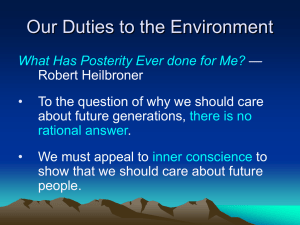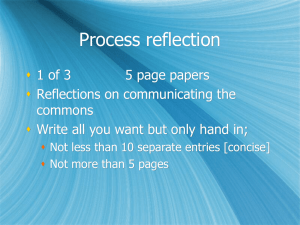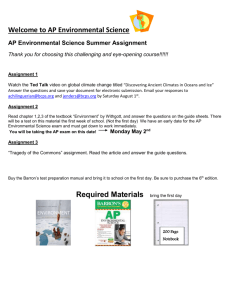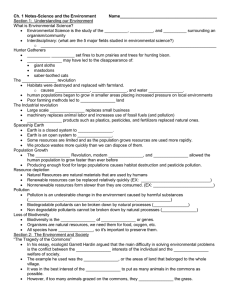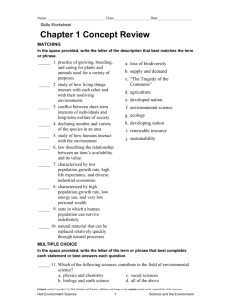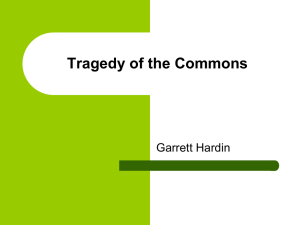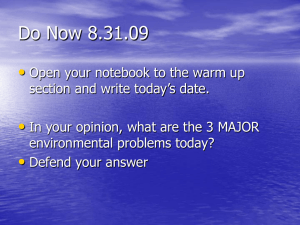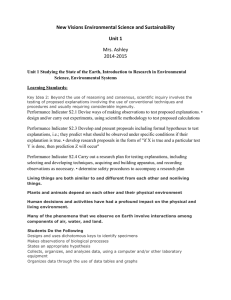Environmental Science and Stability
advertisement
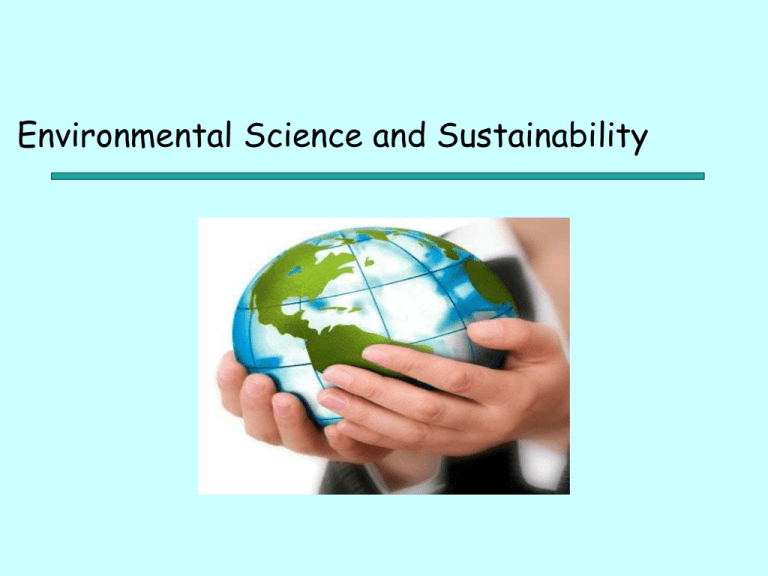
Environmental Science and Sustainability What is Environmental Science? • Environmental Science is the study of the air, water, and land surrounding an organism or a community, which ranges from a small area to Earth’s entire biosphere. • It includes the study of the impact of humans on the environment. The Earth • Life has existed on earth for 3.8 billion years • Earth is well suited for life – – – – Water covers over 71% of the planet Habitable temperatures Moderate sunlight Atmosphere provides oxygen and carbon dioxide – Soil provides essential minerals for plants • However, each day humans are altering the planet. Human Impact through History • Hunter-gathers- caused some animals to become extinct, including: • • • • • giant sloths giant bison mastodons cave bears saber-toothed cats • Agricultural revolution-caused human population to grow and destroyed land. • Industrial revolution- shift to fossil fuels. Improved quality of life for people but allowed for urban areas to flourish. Industrial Revolution • The Industrial Revolution introduced many positive changes. However, it also introduced many new environmental problems, such as pollution and habitat loss. • In the 1900s, modern societies began to use artificial substances in place of raw animal and plant products. • As a result, we know have materials such as plastics, artificial pesticides, and fertilizers. Earth As a System • System – A set of components that interact and function as a whole • Global Earth Systems – Climate, atmosphere, land, coastal zones, ocean • Ecosystem – A natural system consisting of a community of organisms and its physical environment • System approach to environmental science – Helps us understand how human activities effect global environmental parameters The Earth -Closed System • We produce wastes (pollution) that we can not get rid of. • We have local and global environmental issues. • Limited resources • Population increase causes a strain on resources Population Growth • In the past 50 years, nations have used vast amounts of resources to meet the worlds need for food. • Producing enough food for large populations has environmental consequences such as habitat destruction and pesticide pollution. Carrying Capacity • Carrying capacity is the largest population that can be maintained for an indefinite period by a particular environment that is not undergoing change Human Population Growth The world population reached 7 billion in 2012 – Growing exponentially Population • Globally, 1 in 4 people lives in extreme poverty – Without basic food, clothing, and shelter • Difficult to meet population needs without utilizing earth’s resources Gap Between Rich and Poor • In highly developed countries (U.S., Canada, France, Germany, Japan…): – Low birth rate, low infant mortality, low fertility rate, long life expectancies, and goods and services a citizen can buy • In developing countries – High birth rate, high infant mortality, high fertility rate, short life expectancies, and low goods and services a citizen can buy Overpopulation • People overpopulation – Too many people in a given geographic area – Problem in many developing nations • Consumption overpopulation – Each individual in a population consumes too large a share of the resources – Problem in many highly developed nations What are our main Environmental Problems? 1. Resource depletion- Using our resources up faster that they can be replaced. a. Renewable resource- resources that can be replaced relatively quickly ex. Trees, water, soil, air and crops b. Nonrenewable resource- can not be replaced quickly Ex. Fossil fuels, minerals, and metals »Easter Island Tragedy of the Commons • Garrett Hardin (1915-2003) • Solving Environmental Problems is result of struggle between: – Short term welfare – Long term environmental stability and societal welfare • Garrett used Common Pastureland in medieval Europe to illustrate the struggle Tragedy of the Commons Tragedy of the Commons • The commons were eventually replaced by closed fields owned by individuals. • Owners were now careful not to but too many animals on their land, because overgrazing wouldn’t allow them to raise as many animals next year. • Hardin’s point being that someone or some group must take responsibility for maintaining a resource or it will become depleted. What’s your Ecological Footprint? Ecological Footprint The average amount of land, water and ocean required to provide that person with all the resources they consume What are our main Environmental Problems? 2.Pollution- undesired change in air, water or soil that has adverse affects. a. biodegradable pollutants- can be broken down by natural processes. ex. Human sewage and paper b. nonbiodegradable pollutants- can not be broken down by nature. ex. Mercury, lead, and some types of plastic E-Waste What are our main Environmental Problems? 3. Loss of biodiversityrefers to the number and variety of species that live in an area. Endangered species-A species that is in danger of becoming extinct Threatened species-a species that numbers are falling rapidly Environmental Sustainability • The ability to meet current human need for natural resources without compromising the needs of future generations • Requires understanding: – The effects of our actions on the earth – That earth’s resources are not infinite
